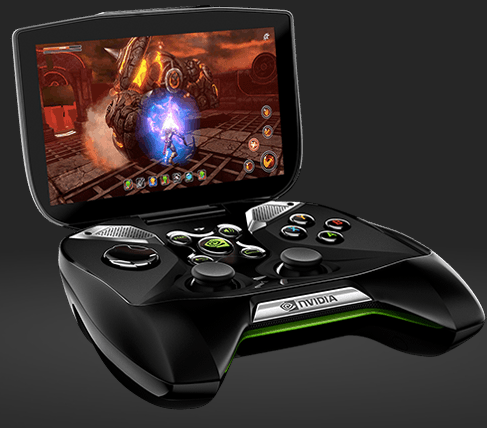
Alongside the Tegra 4, Nvidia has introduced Project Shield, a gaming device that runs Android and is powered by Tegra 4.
Nvidia truly believes that Android is a gaming force to be reckoned with, and is at a considerable advantage of other OEMs due to the presence of its own Tegra Zone gaming portal. Project Shield incorporates a 5-inch 720p display and a gamepad that looks to be a cross between the Xbox 360 and PlayStation 3 controllers. It also has high-quality stereo speakers and high-quality 2×2 MIMO WiFi, an HDMI port, all running on stock Android 4.2 Jelly Bean.
But Project Shield doesn’t end there; despite having its own incredible graphical abilities, it will be able to hook into Steam and play supported games from PCs running Kepler-level graphics cards — that’s GTX 660 and above — over a Local Area Network. Nvidia’s CEO demonstrated Assassin’s Creed 3, downloaded from Steam, playing on the portable gaming system. The CPU/GPU combination on the desktop does all of the processing work — think a local OnLive — and Shield merely plays it back in (hopefully) real time. It supports Steam’s Big Picture mode and will allow purchases on the device itself. Games supported at launch via Steam will be Assassin’s Creed 3, Battlefield 3, Borderlands 2, Portal 2, and Skyrim, among others.
Nvidia also says that future software will allow the Shield to stream content, including games, music, movies and whatever else wirelessly to a connected television.
Inside Project Shield, a 33Whr battery will keep it going for 5-10 hours of gaming and 24 hours of video playback. It will hit Canadian shores in Q2 of this year, though pricing and specific availability has not been revealed just yet.
MobileSyrup may earn a commission from purchases made via our links, which helps fund the journalism we provide free on our website. These links do not influence our editorial content. Support us here.


